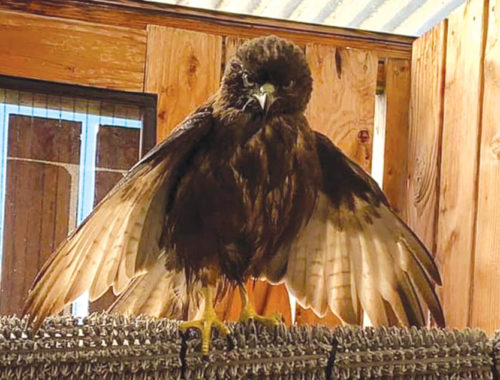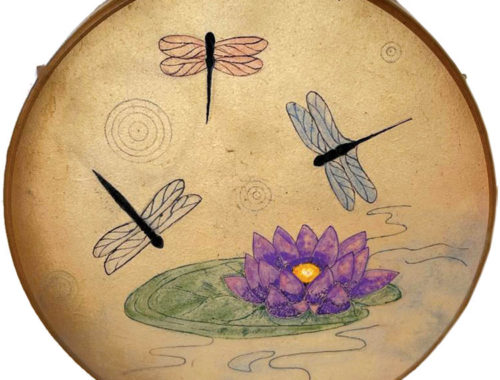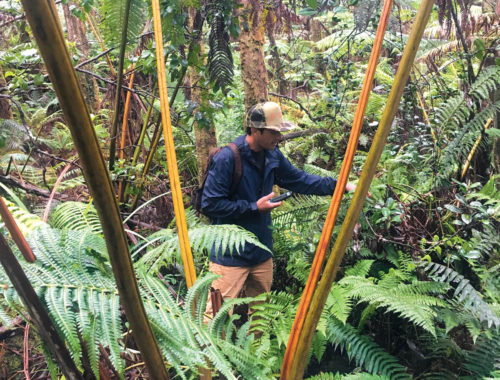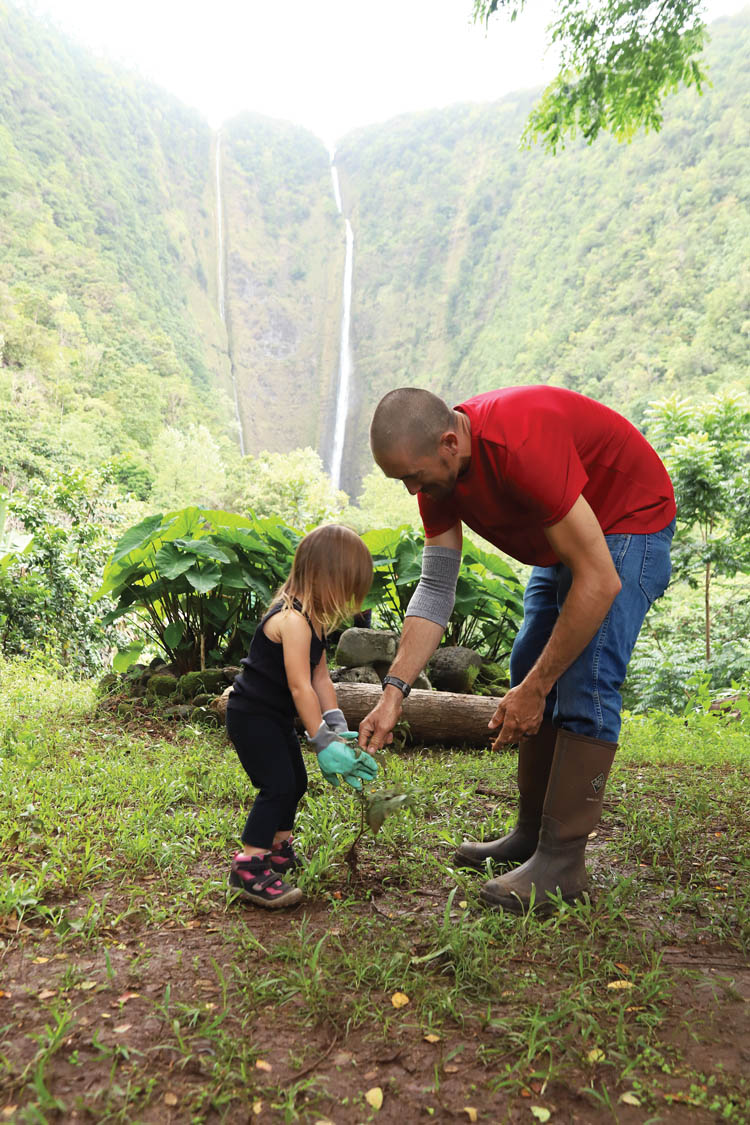
Waipi‘o Valley: A Cultural Kipuka
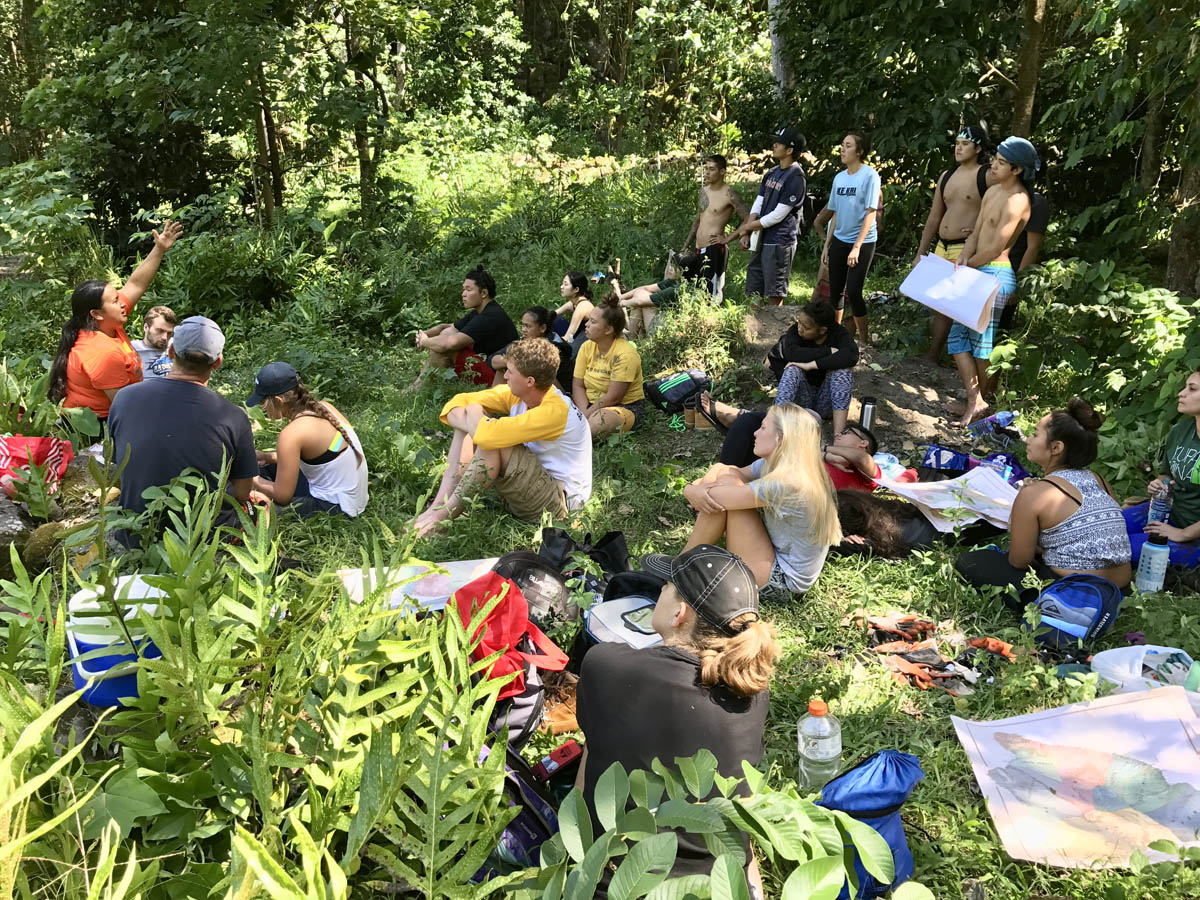
By Jan Wizinowich
It’s December 22, 2021 and Kūlia Kauhi Tolentino Potter greets volunteers from Sam Houston State University (SHSU) at the Waipi‘o Valley lookout. It’s pouring rain and a work day is looking doubtful, but they are full of spirit, having completed a week-long exploration of the island as part of a university geography class conducted by SHSU professors Ava Fujimoto Strait and John Strait.
Kūlia prepares to chant—a request for the rain to clear, allowing the work to be done; she asks the students to join their hearts with hers. As she chants, clouds begin to shift and the whole atmosphere changes. When she is finished, the rain has stopped. Whether coincidence or not, it’s clear that Kūlia’s entire being is in touch with the elder souls of Waipi‘o Valley.
Waipi‘o: Deep Roots
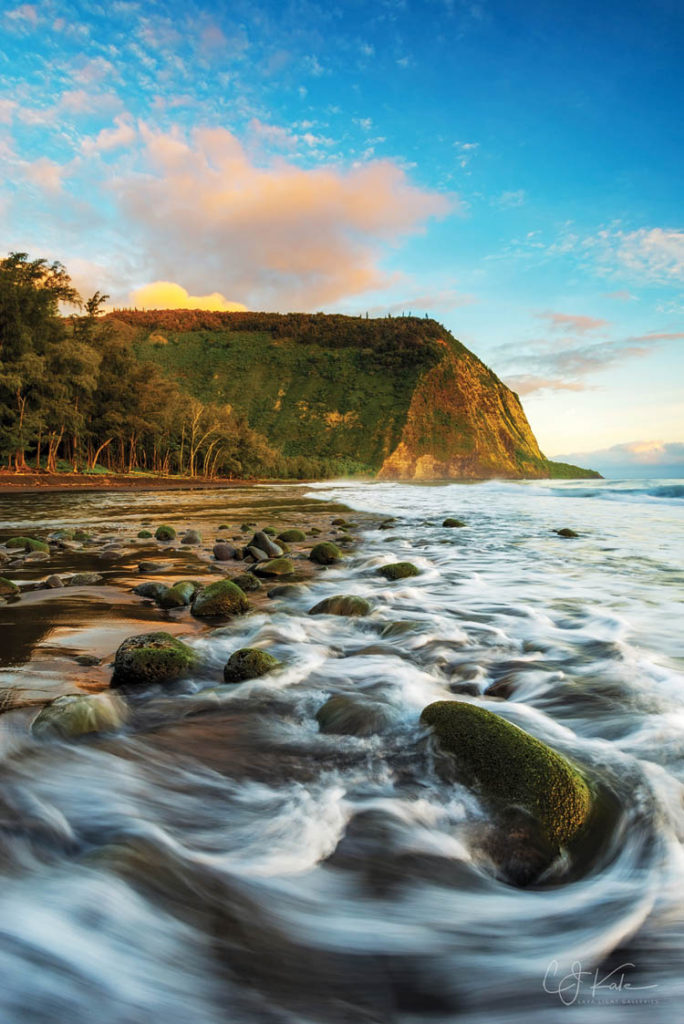
In his book, Voyage: The Discovery of Hawai‘i, Herb Kawainui Kāne imagines the first humans to approach the island in search of a new home. “And then the valley opened before us—a wide valley many times larger than our home in the south. Several waterfalls coursed down its northern walls, and as the valley opened to view, two majestic falls of identical size could be seen cascading side by side down a dark chasm in the high southern cliffs.”
With its abundant lo‘i (taro patches) and seven heiau (temples), including Paka‘alana, once the most powerful spiritual site in all the islands, the valley is a kīpuka (a calm, deep, timeless place) containing reminders to all those that enter of the ancient origins of Hawaiian culture.
Kila is a name that has been passed down through Kūlia’s family and is a beloved ali‘i of Waipi‘o Valley, the youngest son of Mo‘ikena the ali‘i nui of Kaua‘i. After Mo‘ikena’s death, Kila became the high chief of Kaua‘i. On the journey to take his father’s bones back to Tahiti, he was left in Waipi‘o Valley by his two jealous brothers. He lived as a commoner until his true identity as the high chief of Kaua‘i was revealed, and then became konohiki (land manager). During his time as a commoner, he gleaned much about farming. He passed that knowledge on to the valley’s farmers, who were able to grow an abundance of food.
This abundance has carried through the centuries. Historically, Waipi‘o Valley has been the “bread basket” for other communities experiencing famine and drought, and Kūlia carries on that tradition with food boxes delivered to the community. Waipi‘o has also endured the destruction wrought by attacking chiefs, tsunamis, floods, and the ravages of misguided schemes. The valley is in need of help and as a native daughter and lineal descendent, Kūlia has made caring for the valley her kuleana (responsibility).
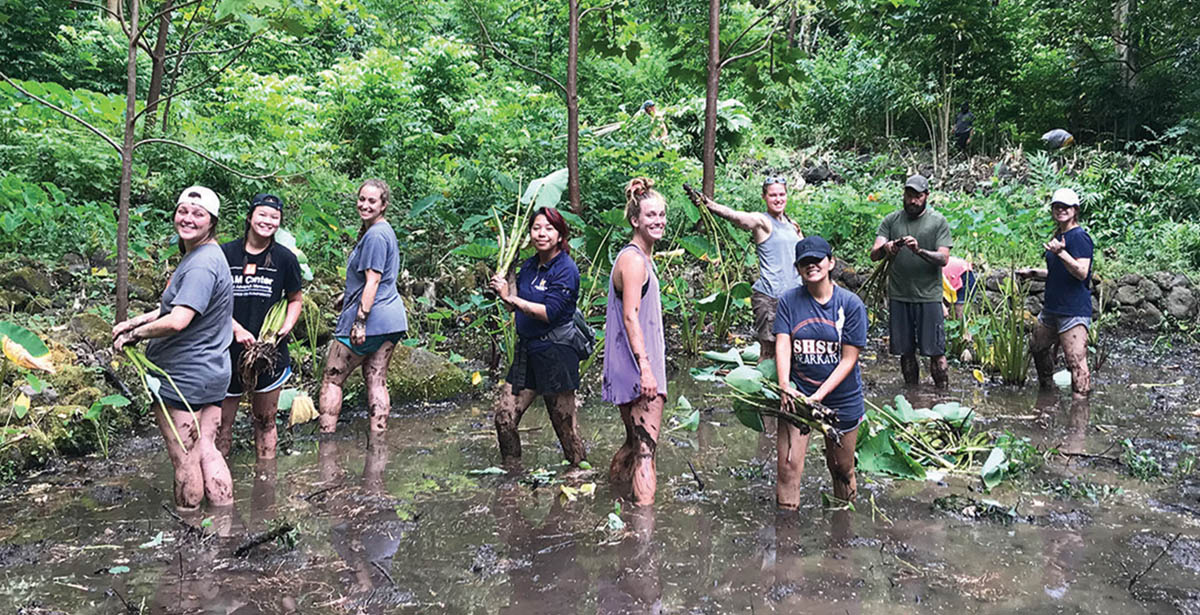
From the Roots Up
The act of regeneration—bringing back to life—has been a recurring theme in Hawaiian legend. Mistakes can be made pono (right) through right actions, restoring things to balance—a matter of “doing the right thing, at the right time, for the right reason” (Aunty Ku Kahakalau).
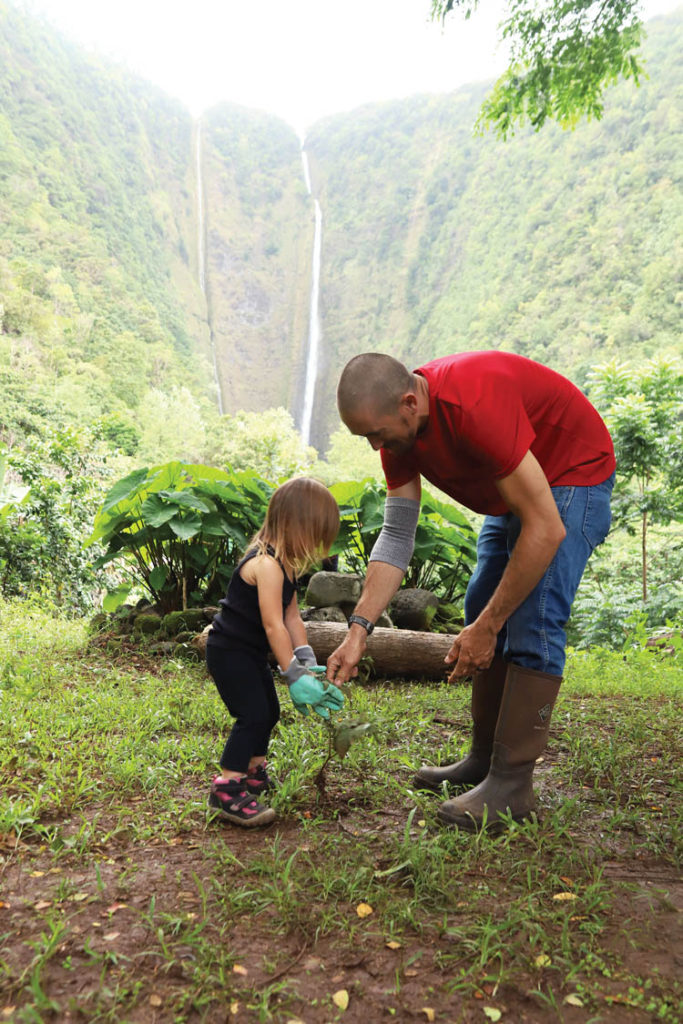
Waipi‘o is Kūlia’s kuleana, inherited from her father and going back countless generations. A native of Honoka‘a, Kūlia spent many “small kid” hours roaming the valley with her father and grandfather. No longer in possession of land in Waipi‘o, on the weekends Kūlia’s family helped work the lo‘i of others. When most kids were playing ball, Kūlia was slogging through the mud, pulling weeds and planting or harvesting kalo (taro). Most keiki would balk, but her love for Waipi‘o took root and grew in her heart.
Kūlia was a student of Ku Kahakalau, who, with her husband Nalei, created the Hawaiian Academy, a school within a school at Honoka‘a High School to teach Hawaiian studies. In 1997 the couple helped open Kanu o ka ‘Āina, a Hawaiian culturally based charter school in Waimea.
When Kūlia left for college, she carried the valley with her. During her time at the University of Hawai‘i at Hilo, she engaged in Hawaiian studies, education and anthropology. While there, all she could think about was coming home.
She got her chance when she started teaching in Keaukaha, and began taking students into Waipi‘o Valley. Like her teacher, Aunty Ku, she noticed that students who were struggling in the classroom suddenly came alive, easily absorbing the lessons of the valley, as if the knowledge and wisdom had lain dormant within them, waiting for the right conditions to emerge. When they returned to the classroom there was a new sense of purpose and confidence that set many of them on a path to success.
In 2001, Kūlia formed Pōhāhā I Ka Lani, a nonprofit that now hosts two or three workshops and volunteer groups a week, educating people about Hawaiian cultural practices, as they work to mālama (care for) the valley. Pōhāhā I Ka Lani’s initial kuleana was the stewardship of six acres, and now also includes five parcels below Hi‘ilawe at Napo‘opo‘o Village, Koa‘ekea (lookout), and most recently, the rim lands which include parcels in Lalakea, Mahiki, Kilohana, Waikaileo, and Puakalehua mā.

Many Hands, Many Hearts
Volunteering in the valley is a work of aloha that demands an open-hearted willingness. The first challenge is actually getting there. The first people to enter Waipi‘o most likely came by water, which had its own challenges. The journey there is a short, steep hike, and before the construction of a road, could be perilous.
Hiram Bingham describes his 1847 trip into Waipi‘o:
“With one hand clinging to little shrubs and strong grass, and with the other thrusting a sharpened staff into the earth to avoid sliding fatally down the steep, I attempted it. Friendly natives of the valley ascended part way to meet and assist me.”
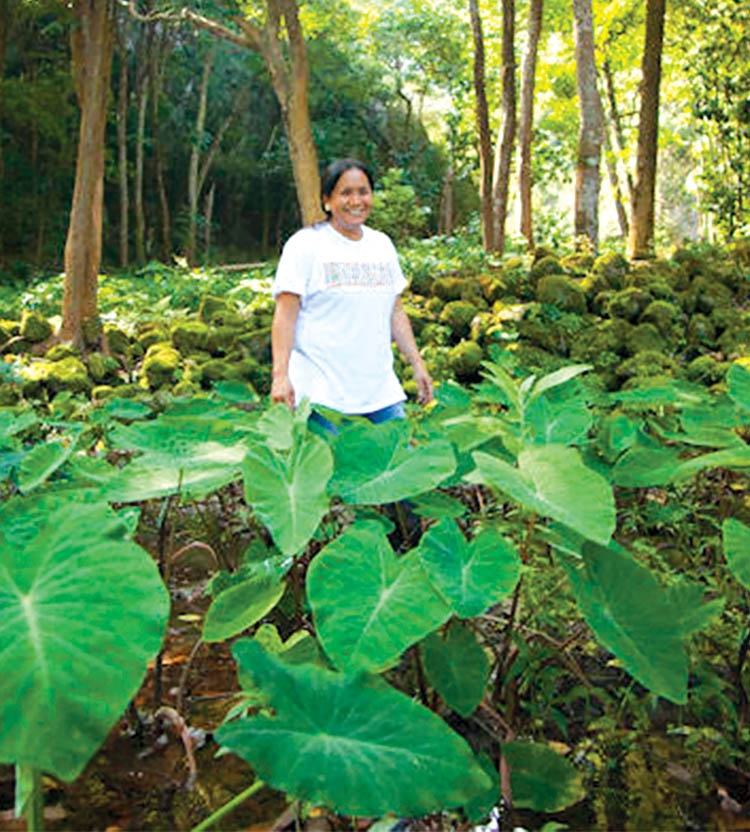
Walking on a widened paved road, the SHSU students need no assistance to enter the valley. They are enveloped in moist fragrant air as the valley floor and its drifting mists beckon them down into an emerald vortex. At the end of the day, they will retrace their steps, this time trudging upslope—body tired, but heart elated.
Over the years, the valley has drawn many volunteers from all over the globe, as well as Hawai‘i. All have sensed the mana (spirit) that is Waipi‘o, and left the valley changed. “They’re in awe. Just to be standing in an ancient taro field. In the mud, mosquitoes. But they’re giving back. It’s a humbling experience. Sustainability has a deeper meaning. It changes how they move through the world after that,” relates Ava, also a descendent of Hāmākua.
Nestled at the foot of Hi‘ilawe falls, Napo‘opo‘o Village was originally one of the largest settlements in the valley. Because of its isolation, it’s impossible to bring in machinery, or to haul materials out. Through volunteer help, green waste has been composted, rock walls have been rebuilt, and lo‘i reestablished.
“Different school groups helped us open up the lo‘i. We didn’t sell taro. We donated to school events and now we give to families,” says Kūlia. A distant echo from the past when there were poi factories in the valley that supplied Hāmākua, Pa‘auilo, Waimea, and Waiki‘i with poi, hauled up in mule trains.

Napo‘opo‘o has also been planted with a community garden that contains natives and endemics used for both lā‘au lapa‘au and cultural practices such as hula. “We had no money so we used whatever we had. It was all overgrown so we made a community garden. It has everything people need for food and cultural practices. Every kind of flower for hula, and banana, breadfruit, sugarcane, 15 milo trees, kukui, and hala,” shares Kūlia.
This is mirrored up at Koa‘ekea, the lookout, where lush native gardens thrive. This was made possible when the County of Hawai‘i purchased the property through the Public Open Spaces and Natural Resources (PONC) program and awarded the stewardship to Pōhāhā I Ka Lani.
“It had been a dump site. There were 13 abandoned vehicles, 50 loads of trash, and an abandoned lunch truck with a banyan tree growing from it. We cleared it all out and planted natives. The community came out and helped. Uncle Toko came with his torch and helped us with the lunch truck. People brought weed whackers, plants they grew, and helped us to cook,” recalls Kūlia.
Building a rock wall to protect the rim lands is another recent project involving many hands, guided by kahuna pōhaku (rock wall expert), Uncle Walter Wong, and many volunteers who have given their time and effort to Waipi‘o.
Today a Growth International Volunteer Excursion (GIVE) group is assembled at the entrance to one of the rim land sections. Their introductions are wide-ranging across the continental US and they have come together for the first time, with a common purpose: to give back.
One of the volunteers asks: “Is there anything around here that can be used as medicine?” Kūlia identifies honohono, which is a plant that can be used to seal wounds in the absence of a first aid kit. After a short lesson about the uses of the ti plant, the volunteers get to work clearing weeds and grass from around large boulders, what Kūlia identifies as “protectors,” on either side of the entry.
As difficult and demanding as the work can be, Kūlia continues to live up to her name as one who strives with strength and wisdom to share the gifts of Waipi‘o Valley that have touched the lives of so many. ❖
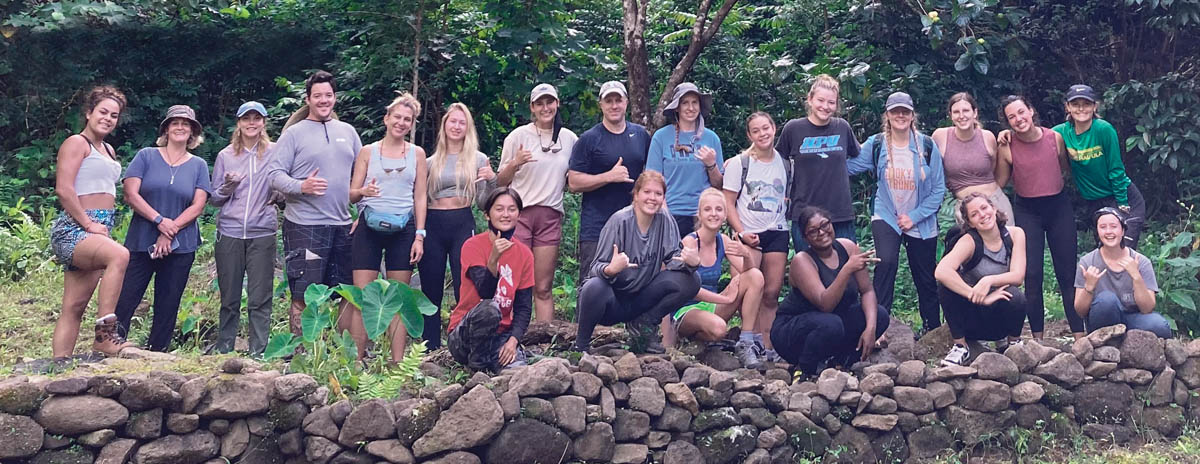
For more information: pohahaikalani.com

